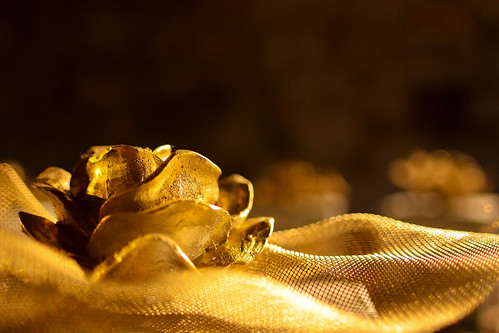Somehow, over the last several hundred years, the rose has become nearly a universal symbol of love and devotion. Why, is open to interpretation, but as I am an avid gardener, as well as a jeweler, I must admit even the very name of Rose Gold has a special attraction, especially with rose gold jewelry.
First off, as romantic as the name is, roses have absolutely no place in the creation of this alloy used for rose gold jewelry. Alchemical processes not withstanding, Rose gold is simply a mixture of gold, copper, and a few other trace elements.
Why a mixture you ask? Well, as expensive as gold is, the majority of the worlds gold jewelry is karated to a greater or lesser extent in an effort to bring down costs. Please note- No carrots are harmed in the creation of gold alloys. Instead, karating is a term for mixing metals with gold to produce a specific ratio of gold and alternate metals, like copper. In most cases, this is done to reduce costs while still giving the best appearance of pure gold. In the case of Rose Gold, however, the balance of non- gold materials is largely copper to give a “rosy” golden hue to the finished product. As very few people allow the sharing of finished rose gold pieces, I have an image of a Rose Gold Druzy, as my example today.

Note the contrast between the rosy hue of the Rose Gold bonded to the druzy, and the golden shades of the 14K and 18 K gold surrounding metals. Even the white sapphire accent only enhances the stunning glow of rose gold…
Now, caring for Rose Gold jewelry is pretty much identical to caring for most Gold jewelry. Cleaning jewelry that is regularly worn with mild detergent and a soft cloth is recommended. If you wear lotions and perfumes, cleaning more often and possibly with a soft toothbrush may be needed to remove buildup.
All gold jewelry less than pure 24k gold will tarnish eventually, and should be polished and protected. When using a commercial metal cleaner, be very careful, especially if the piece is antique, or is set with any kind of stone. Many gemstones can be permanently marred by the chemicals in metal cleaners- even those that are supposedly gentle.
On the other hand, if a piece is antique, these types of pieces are sometimes more valuable with its patina or tarnish intact. Consult an appraiser before cleaning any potentially valuable piece of jewelry! And please. Never wear your gold jewelry in a hot tub, or swimming pool. Those kinds of chemicals found in the water are as damaging to jewelry as running over it with a car would be.
To be honest, the only thing different about Rose Gold, is it’s amazing color, and fanciful name. Still- I think that’s more than enough, don’t you?

 Golden Rose by Rolf Venema
Golden Rose by Rolf Venema
Very pretty! What about other colors? I seem to recall green. I also know that Japanese jewelers used a number of different gold alloys in the fabrication of Mokume Gane. Got any more info?
Today’s post was about rose gold, so I only talked about – wait for it- Rose Gold. 🙂
I will cover the other colors of gold, as well as specialty alloys, but only one at a time. Have no fear- I will do another series of articles on the finer points of Mokume Gane in due course. Patience, dear Reader! I can only write so fast before the keyboard smokes…. 😀
OK, I’m abashed…
I do know about Mokume Gane, I’m actually more interested in the Japanese alloys they used (Shibuchi?).
I must say i liked reading through your post! I enjoy all things handmade, but in particular handmade jewelry. Keep up the spectacular work!
Nice article! You are sharing a wonderful blog with us. I like this blog and found very helpful. Thanks a lot for sharing.